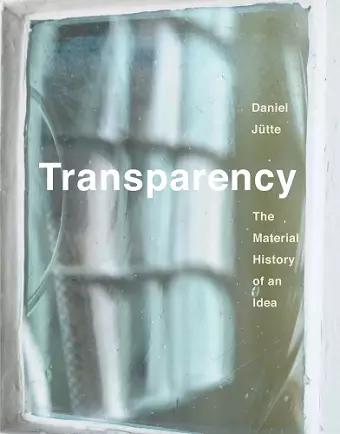Transparency
The Material History of an Idea
Format:Hardback
Publisher:Yale University Press
Published:28th Mar '23
Should be back in stock very soon

A wide-ranging illustrated history of transparency as told through the evolution of the glass window
“With impressive detail and wide-ranging erudition, Jütte charts the history of a single material, glass, as a product of human ingenuity developed across centuries.”—James Gleick, New York Review of Books
Transparency is a mantra of our day. It is key to the Western understanding of a liberal society. We expect transparency from, for instance, political institutions, corporations, and the media. But how did it become such a powerful—and global—idea?
From ancient glass to Apple’s corporate headquarters, this book is the first to probe how Western people have experienced, conceptualized, and evaluated transparency. Daniel Jütte argues that the experience of transparency has been inextricably linked to one element of Western architecture: the glass window.
Windows are meant to be unnoticed. Yet a historical perspective reveals the role that glass has played in shaping how we see and interpret the world. A seemingly “pure” material, glass has been endowed, throughout history, with political, social, and cultural meaning, in manifold and sometimes conflicting ways. At the same time, Jütte raises questions about the future of vitreous transparency—its costs in terms of visual privacy but also its ecological price tag in an age of accelerating climate change.
“With impressive detail and wide-ranging erudition, Jütte charts the history of a single material, glass, as a product of human ingenuity developed across centuries.”—James Gleick, New York Review of Books
“A remarkable achievement—a work of stunning range and erudition. Revelation upon revelation follow in ways that readers will find dazzling and unexpected: very quickly the history of glass and transparency opens up into a much wider vista than the reader ever could have anticipated.”—Darrin M. McMahon, Dartmouth College
“Glass is something we rarely look at, transparency something we almost never achieve. Daniel Jütte’s novel account of their fraught entanglement from ancient Rome to the present is a tour de force: lucid, surprising, and consistently illuminating.”—David Armitage, Harvard University
“This enthralling book opens a window onto windows: what they’re made of and what they mean. The long history of piercing walls to let in light is rich in lessons about the aesthetics of light and shadow, the politics of privacy and publicity, and the economics of glitzy glass—whether in the stained glass of a medieval cathedral or the reflecting glass of a soaring skyscraper. Daniel Jütte’s long history of transparency is an object lesson in how matter can become metaphor.”—Lorraine Daston, director emerita, Max Planck Institute for the History of Science
“Astonishingly erudite and global in embrace, Jütte examines a crucial concept across history, both in thought and, more important, embedded concretely—as building material. A remarkable marriage of intellectual and architectural history.”—Peter Baldwin, University of California at Los Angeles
“This world history of the glass window across millennia will take you by surprise and make you think about the material bases of one of the key cultural metaphors of our time. An elegant and fascinating book.”—Francesca Trivellato, Institute for Advanced Study, Princeton
“Daniel Jütte is already known for a brilliant study of thresholds and power in western history. Transparency presents an equally brilliant history of windows and their associations with both surveillance and democracy, from ancient Rome to the present.”—Peter Burke, Emmanuel College, Cambridge
“Enthralling. Jütte’s book will make you think differently about Western history, architecture, art, literature, and your very surroundings. Full of surprises, brilliantly conceptualized, impressively researched, a joy to read and feast for the eyes, it ranks among the best works on material history and cultural studies.”—Ulinka Rublack, St. John’s College, Cambridge
ISBN: 9780300237245
Dimensions: unknown
Weight: unknown
512 pages